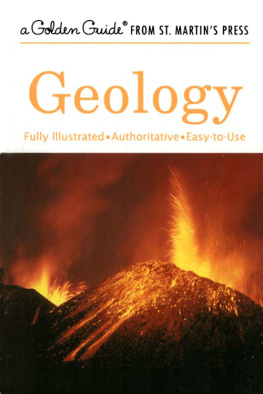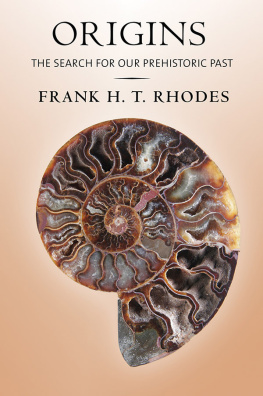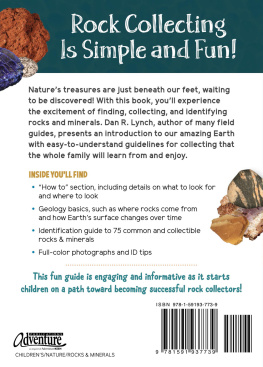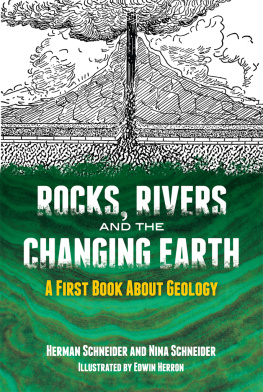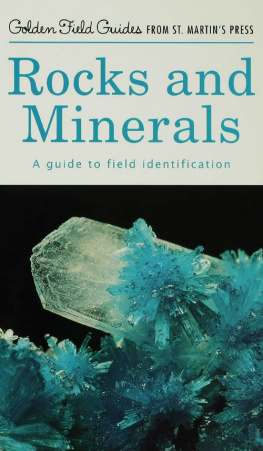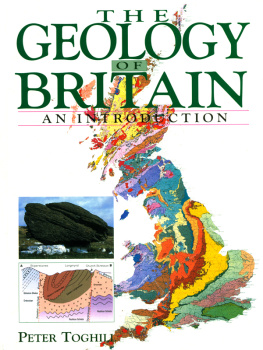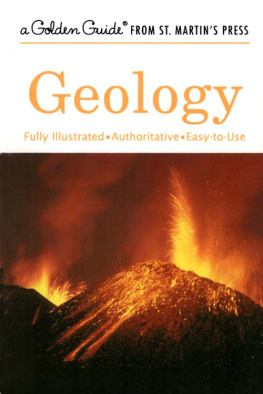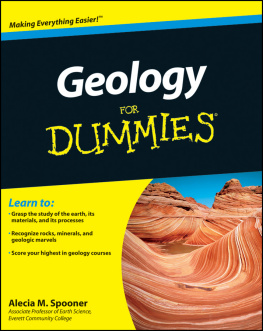The object of this book is to introduce the earth: its relation to the rest of the universe, the rocks and minerals of which it is made up, the forces that shape it, and the 5 billion years of history that have given it its present form. Many topics that are discussed in the book have a very practical and urgent significance for our society, things such as water supply, industrial minerals, ore deposits, and fuels. Others are of importance in longer planning and development, such as earthquake effects, marine erosion, landslides, arid regions, and so on. The earth provides the ultimate basis of our present society: the air we breathe, the water we drink, the food we eat, the materials we use. All are the products of our planet.
The study of the earth opens our eyes to a vast scale of time that provides us with new dimensions, meanings, and perspectives. And it reveals the order of the earth, its dynamic interdependence and its structured beauty.
I am most grateful to Sharon Sanford, who typed the manuscript of the revised edition.
F.H.T.R.
GEOLOGY AND OURSELVES
Geology is the study of the earth. As a science, it is a newcomer in comparison with, say, astronomy. Whereas geology is only about 200 years old, astronomy was actively studied by the Egyptians as long as 4,000 years ago. Yet speculation about the earth and its activities must be as old as the human race. Surely, primitive people were familiar with such natural disasters as earthquakes and volcanic eruptions.
Gradually, human society became more dependent upon the earth in increasingly complex ways. Today, behind the insulation of our modern living conditions, civilization remains basically dependent upon our knowledge of the earth. All our minerals come from the earths crust. Water supply, agriculture, and land use also depend upon sound geologic information.
Geology stimulates the mind. It makes use of almost all other sciences and gives much to them in return. It is the basis of modern society.

Volcanic eruption in Kapoho, Hawaii. Many islands in the Pacific are volcanic in origin.
THE BRANCH OF GEOLOGY emphasized here is physical geology. Other Golden Guides of this series, Rocks and Minerals and Fossils, deal with the branches of mineralogy, petrology, and paleontology.
PHYSICAL GEOLOGY is the overall study of the earth, embracing most other branches of geology but stressing the dynamic and structural aspects. It includes a study of landscape development, the earths interior, the nature of mountains, and the composition of rocks and minerals.

HISTORICAL GEOLOGY is the study of the history of earth and its inhabitants. It traces ancient geographies and the evolution of life.

ECONOMIC GEOLOGY is geology applied to the search for and exploitation of mineral resources such as metallic ores, fuels, and water.

STRUCTURAL GEOLOGY (tectonics) is the study of earth structures and their relationship to the forces that produce the structures.

GEOPHYSICS is the study of the earths physical properties. It includes the study of earthquakes (seismology) and methods of mineral and oil exploration.

PHYSICAL OCEANOGRAPHY is closely related to geology and is concerned with the seas, major ocean basins, seafloors, and the crust beneath them.

THE SIZE AND SHAPE OF THE EARTH were not always calculated accurately. Most ancient peoples thought the earth was flat, but there are many simple proofs that the earth is a sphere. For instance, as a ship approaches from over the horizon, masts or funnels are visible. As the ship comes closer, more of its lower parts come into view. Final proof, of course, was provided by circumnavigating the globe and by photographs taken from spacecraft.
The Greek geographer and astronomer Eratosthenes was probably the first (about 225 B.C.) to measure successfully the circumference of the earth. The basis for his calculations was the measurement of the elevation of the sun from two different points on the globe. Two simultaneous observations were made, one from Alexandria, Egypt (Point B, seen ), and the other from a site on the Nile near the present Aswan Dam (Point A). At the latter point, a good vertical sighting could be made, as the sun was known to shine directly down a well at noon on the longest day (June 23) of the year.

